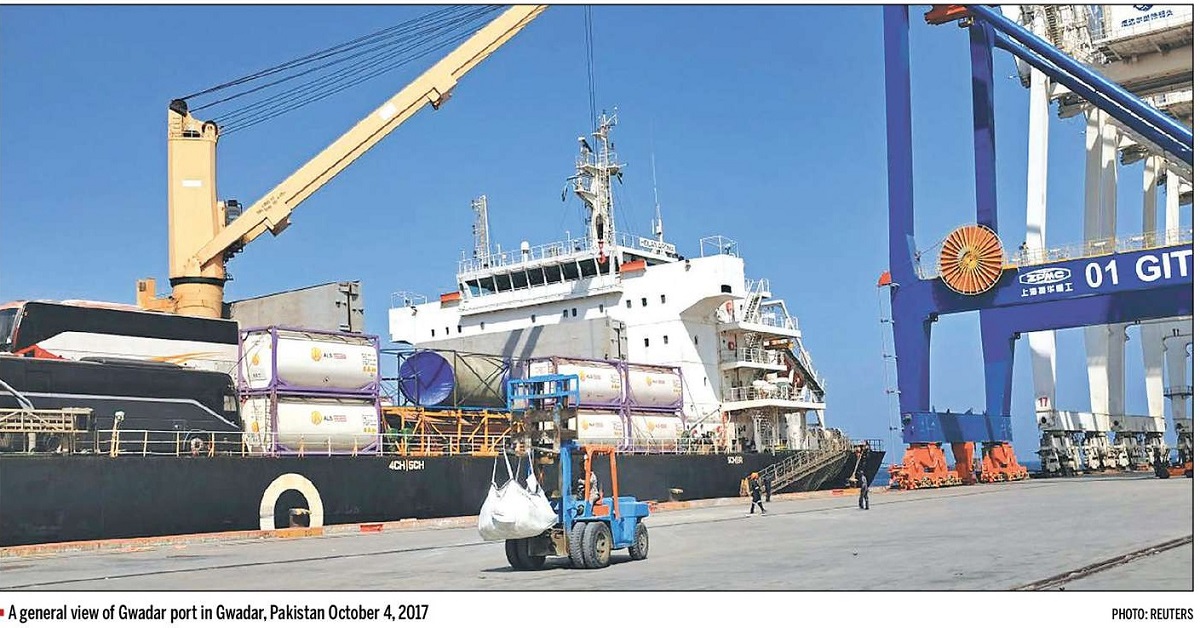
“Misunderstanding China -China's actions in the South Asian Indian Ocean Region have been misinterpreted as hawkish”
Mainstream punditry portrays China's Belt and Road Initiative (BRI) as Beijing's grand design to return to a position of dominance last enjoyed during the Qing dynasty. Commentary in South Asian media outlets, particularly in India, has become increasingly vitriolic about security and sovereignty threats. These perceived threats, as realist’s claim, stern out of the 'string of pearls' discourse, which chastises China for strategically positioning naval bases throughout the Indian Ocean.
While China's intentions concerning the `maritime silk road' remain ambiguous, Beijing's actions have spurred the US to marshal its resources to monitor Chinese actions and secure its position in the South Asian Indian Ocean Region (SA-IOR) via India. Hence, the US Senate recently approved $717 billion in annual defense spending for 2019. Officials say most of this spending is to secure the US from an unprecedented nuclear threat in the Indo-Pacific region against all security challenges emerging from China, Russia, North Korea and terrorism, and to build a better defense relationship with India.
The rhetoric that China's rise is driven purely by its desire to become a hegemon lacks evidence. The domination of realist ideologies in the media and scholarship has pushed the narrative of China's BRI as a neocolonial strategy to influence developing countries in Africa, South Asia, and East Asia. China's actions in other parts of the world—for example, in Europe with the `16+1 cooperation' and President Xi Jinping's recent visit to the Middle East and Africa to promote China's South-South cooperation and establish a comprehensive strategic partnership under BRI—are also fueling this cynicism.
String of pearls
For realists, survival is the ultimate goal of all states, and great powers will always be concerned with their security and perpetually seek to maximize their share of world power Mearsheimer-a realist, asserts that a great power will apply `strategic diplomacy' to ensure that other regions are engaged in continuous dispute and remain divided Built around this philosophy, China's engagement in the SA IOR complements Mearsheimer's argument that China will try to dominate Asia, much like the United States dominates the Western Hemisphere.
The bulk of this argument is driven by concerns about the design and sustainability of China's BRI initiative. The 99-year lease of Sri Lanka's Hambantota Port has become a lightning rod for the criticism of Chinese investment. Similarly, the 50-year lease for Feydhoo Finolhu island and the proposal to build a port in Lamu Atoll (Gadhoo island, the Maldives), which is in close proximity to India's Lakshadweep chain, has raised serious concerns for India. The most disputed is the China Pakistan Economic Corridor, which passes through Pakistan Occupied Kashmir region, and earned notoriety after the completion of the Gwadar port and its lease to China until 2050. In addition, the Chittagong port, developed on mutually-agreed terms between Bangladesh and China, is also considered a vital link in China's supposed `string of pearls' strategy.
Multiple narratives
India's disagreement over China's BRI initiative was obvious in Prime Minister Narendra Modi's refusal to endorse the BRI programme again at the Shanghai Cooperation Organization forum in June this year. China is a new entrant in the Indian Ocean and is desperate to secure its investment and trade, which passes through the important sea gate-ways. With the expansion of BRI through-out the SA-IOR region, critics charge that China's focus on infrastructure and port development linking regional countries is a strategy to contain India in the IOR. Amid China's growing economic clout, it is only natural for Beijing to seek partnerships in developing and managing ports as well as securing safe sea lanes for trade. This is nothing different from what India and the US do.
In order to mitigate piracy in the Gulf of Aden to ensure the security of its energy supplies from West Asia and Africa and for the purpose of refueling, restocking, rest and recreation for its oil/gas tankers and naval ships deployed in this area, China's approach to the SA-IOR countries seems justifiable. So far, all evidence suggests that China is not interested in setting up naval bases, but is more keen to establish logistics facilities for its oil/gas tankers and naval vessels. In this new international order, where the old unipolar world is shifting to a multipolar one, the concern of each rising power is to secure its weakest point and expand its strength, which might be military or economic.
Economic security is now more important than ever. The ongoing trade war between China and the US, the revival of the Quadrilateral Security Dialogue among the US, Japan, India and Australia which displays overt investment in the promotion of freedom of navigation in the IOR, limited not only to military but also on sound economic agendas like the new Indo Japanese Africa Asia Growth Corridor, are evidence of this. In this context, the rise of new China in SA-IOR cannot be explained by only one school of thought but needs multiple ideologies with evidence-based arguments.
Author: HINDU SANSKRITI KARKI
(Karki is pursuing a PhD in International Politics at Fudan University, Shanghai, China.)
(From The Kathmandu Post)





